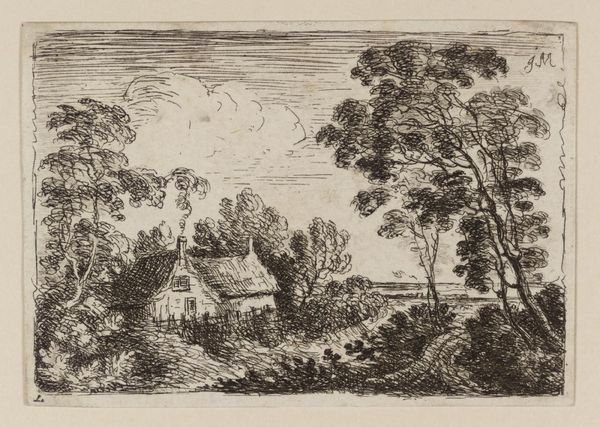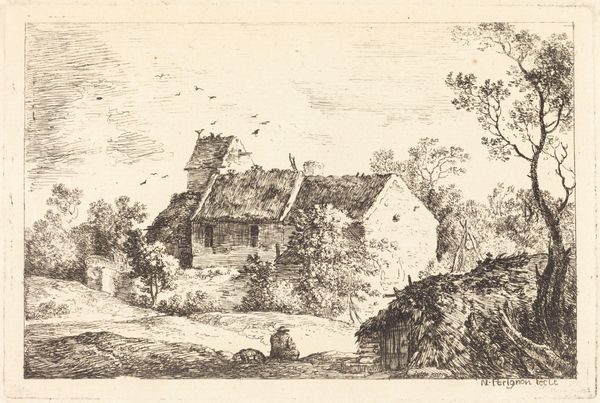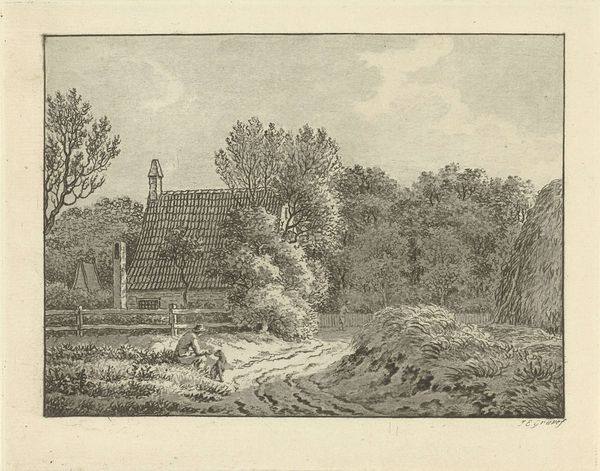
Man in een roeiboot bij een huis aan het water Possibly 1630 - 1799
0:00
0:00
print, etching
#
dutch-golden-age
# print
#
pen sketch
#
etching
#
pencil sketch
#
old engraving style
#
landscape
#
figuration
#
line
#
cityscape
Dimensions: height 95 mm, width 140 mm
Copyright: Rijks Museum: Open Domain
Editor: This is "Man in a Rowboat by a House on the Water," an etching by Anthonie Waterloo, likely created sometime between 1630 and 1799. I'm really struck by how much detail he manages to get into such a small print. The composition almost feels cinematic. What do you see in this piece? Curator: The artistry lies precisely in the masterful manipulation of line and tone. Note how Waterloo uses a varied etching technique – light, delicate lines to suggest distance and atmosphere, denser, more pronounced lines to describe the immediate foreground. The balance between the shaded architectural structures and the open, reflective water creates a sophisticated visual tension, wouldn't you agree? Editor: I do. It’s interesting how the reflections almost mirror the buildings. The lines are so intricate that it almost looks like a pencil sketch! How do you think he achieved this? Curator: Indeed. Look closely at how Waterloo manipulates the burin to vary the depth and width of each etched line. It is this control of the burin that evokes the texture of the stonework and the foliage, and mimics the effect of a pencil or pen. The density of line generates tone, and thus form. What about the spatial relationships in the work? Do they conform to the expected rules of perspective? Editor: I notice that some of the lines and building perspectives seem off. So he is intentionally playing with perspective? Curator: Precisely. He bends reality to his artistic vision. By disrupting conventional perspective, Waterloo draws our attention to the two-dimensional surface of the print, constantly reminding us that this is a constructed image, a masterful orchestration of line and tone. The flattening adds to the appeal and suggests a move toward a more modern vision. Editor: This etching really is more than just a simple landscape. I appreciate learning about the formal elements and how they shape our experience of the image. Curator: Yes, understanding the formal aspects of an artwork enhances our perception and appreciation, opening new pathways into the rich layers of artistic creation.
Comments
No comments
Be the first to comment and join the conversation on the ultimate creative platform.













